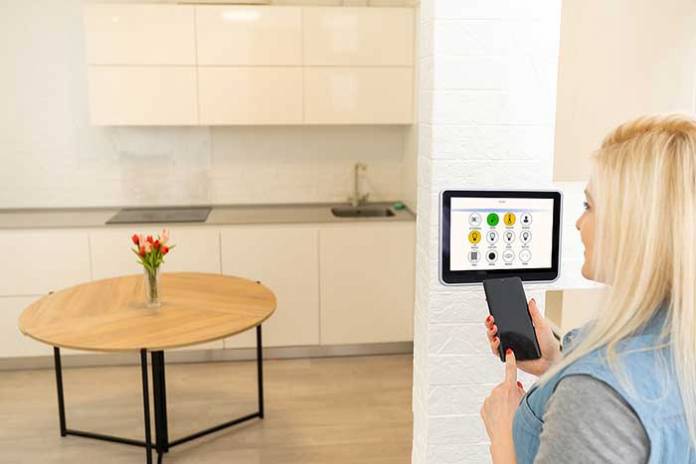
Lighting has evolved over time, allowing users to navigate through the dark with ease. Currently, lighting involves more than bulbs or other fixtures used in buildings depending on aesthetics or budget.
Once matched with controls, smart building lighting technologies are becoming much more than radiance in various industries like aviation, healthcare, retail, aviation, offices, and residential areas.
Today, smart lights are transforming the way homeowners manage their premises. Apart from influencing our routines, they are enabling us to preserve energy while boosting our productivity. Once you adopt smart building lighting systems, you can highly benefit from its vast possibilities via the digitally linked end-to-end technology. This technology begins with local chained solutions and could develop allied system-wide building automation technologies.
Smart Lighting Basics
Smart lighting is a technology designed to facilitate energy convenience, efficiency, and security. This technology could include automated controls and highly effective fixtures that adjust depending on conditions like daylight, nighttime, and occupancy.
Lighting Controls and Linked Luminaire
Whether you are an electrical expert or not, it is easy to determine how smart building systems driven by linked controls and luminaires help reduce energy costs in buildings. Some of the available smart lighting technology control platforms available in the market today are designed to deliver reliable data collection.
Building owners can leverage the data as awareness to facilitate cross-functional communication from business managers, building owners, and the facilities. These technologies evolve based on the business and building needs to accommodate connection with a range of systems. Further, they monitor, regulate, and integrate with the building management system and the lighting.
What is a Linked Luminaire?
A luminaire is a standard and technical definition for an exhaustive light unit. It comprises a lamp or even lamps complete with the parts structured to facilitate the distribution of light, place and safeguard ballast and lamps, accordingly and ensure lamps are connected to a power supply.
Some modern manufacturers today have integrated advanced technologies that are either connected or embedded to a light source. What results is a simple installation process with minimal complications, unlike when elements were separately installed.
The advanced luminaires offer excellent light output quality and facilitate deliverability. Here are some of the embedded elements you are likely to find in an advanced linked luminaire.
- A driver, which is designed to regulate the specific energy current running through the luminaire.
- Bluetooth enabled sensors or beacons which deliver position precisely once the device detects the beacon
- Wireless and wired controls, which help reduce the demand and consumption of energy when the luminaries are inactive.
- A fog or gateway wired or wireless connector, which links to the luminaire to drive data to the cloud or fog for the projects’ specific use case. In this case, the fog is a secure enterprise or local specific sharing or storage facility.
- A battery pack, which offers backup or extra power in case of electrical emergencies or outages.
As many buildings are modified and renovated, facility managers and building owners choose linked LED luminaires due to their enhanced functionality and vast benefits and features.
Understanding the Difference Between Wireless and Wired Controls
To determine whether your project requires wireless or wired controls, you want to analyze the current building and its low bandwidth connections capacity. Consider the extent of the building and the existing walls.
Sometimes the project may require a combination of wireless and wired controls. Some of the advanced luminaires available today can be defined as both wireless and wired. Wired controls are linked or daisy connected through category five cables. These cables are the approved ethernet connection options used in building projects and IT.
Some wireless controls available today are linked via low-energy Bluetooth. Consider collaborating with a professional systems integrator, installer, and specifier for reliable product recommendations if your project is overly complex.
Bridging Wireless and Wired Controls
The process of bridging wireless and wired controls can be executed through a BLE (Bluetooth low energy) radio and an LED embedded driver. Information signals and codes are discharged from nearby beacons or sensors to the advanced linked luminaires. This process generates a digital luminaire network. These components are structured to collaborate and enable functions such as dimming or brightening lights or adjusting the light to your preferred temperature.
Many of the advanced smart lighting products in the market today come with rigorous security protocols. They are integrated with secure gateway connections to guarantee the safety of the client’s infrastructure and architecture. It would help if you also determined your organization’s security demands.
Doing so helps you ensure that the linked end-to-end technology operates within the framework laid down by your IT department. If you plan to activate extra services or utilize a third party via the linked luminaires, ensure you have correctly configured security protocols and monitor them closely.
Advantages of Digitally Linked End-to-End Technologies
The functionality of LED products and the light output quality enhance the visual aesthetic appearance of property owned by organizations with linked luminaires instantly. Smart lighting renovation projects enabled maintenance professionals and facility managers an opportunity to adopt advanced technology, which boosts efficiencies like highly functional lighting systems and better building system reporting.
End-to-end technologies are highly customizable and structured to offer futuristic infrastructure that can be upgraded, managed, and maintained easily. Such conveniences reduce implementation expenses for possible projects in the future while simplifying installation demands. Remember, there are fewer gadgets to install when using linked luminaires.
Linked end-to-end technologies facilitate consolidated system-wide concepts to energy preservation and general lighting functionality. They also feature daylight collection and motion-sensing sensors structured for natural daylight optimization.
Building owners can easily integrate end-to-end technologies with structural management systems using advanced technologies which support a vast range of rules which can be integrated with other products to link various systems like controllers to HVAC. Linked digital controls feature diagnostic capabilities which create distinct diagnostics and distribute firmware updates from the network to the driver, keeping the system updated with the latest security codes.
Finally
Instead of relying on an archaic building foundation, a digital connection modernizes a premise by furnishing it with end-to-end technology. The linked experience can expand to other departments and areas away from the building.
The advanced technology can allow facility managers to monitor the operations capability of the manufacturing process. It offers metrics for analyzing asset tracking and productivity objectives powered by the installed linked luminaires.











